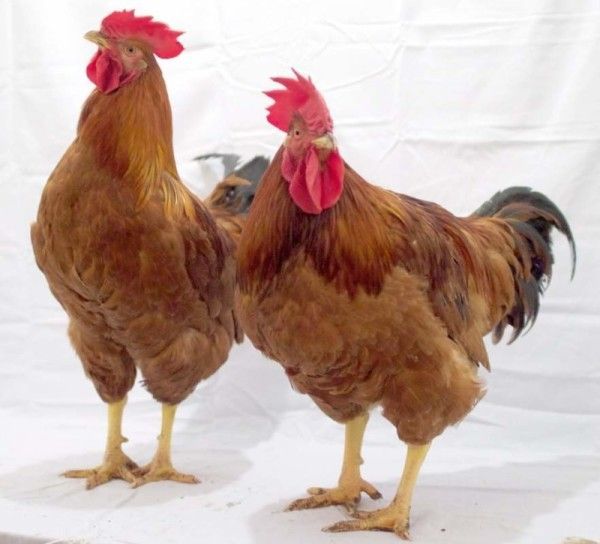The main task of the industrial poultry industry is the breeding of new highly productive poultry. To achieve the desired result, mixing several breeds and creating hybrids is used.
Such hybrids are called crosses, which from English translates as intersection. Crosses have a number of positive characteristics.that distinguish them from other breeds.
They are characterized by increased productivity, survival rate and quickly adapt to new environmental conditions.
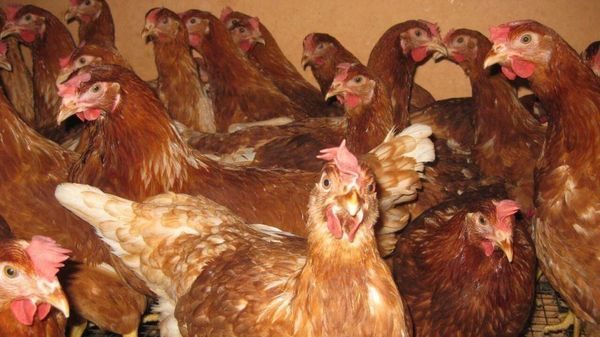 One of these crosses is the meat-breaking broken brown. But, despite its belonging to the meat-breaking type, the broken brown is known precisely as egg cross-chicken.
One of these crosses is the meat-breaking broken brown. But, despite its belonging to the meat-breaking type, the broken brown is known precisely as egg cross-chicken.
Table of contents
Description and photo breed loman brown
Loman Brown is one of the most well-known and productive egg crosses.
The breed was bred by the German company Lohmann Tierzucht GmbH, through many years of breeding work on crossing 4 breeds of first-generation hybrids, which was based on obtaining highly productive cross-country regardless of the conditions of their maintenance.
The color of bird plumage is brown and white, a type of color characterized by the presence of two genes: maternal and paternal. Most often roosters are white, and chickens have red-brown plumage.
Crosses differ in a strong constitution, wide breasts, tight belly and well developed wings.
Birds are well adapted to new conditions and completely unpretentious.
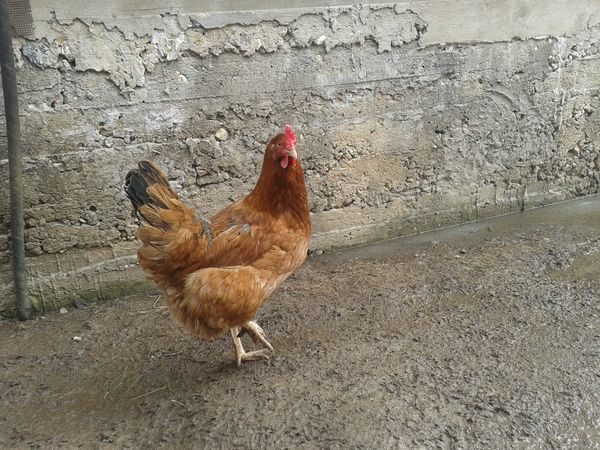 Cross is not prone to weight gain and obesity. Brown Brown has established itself as a highly productive, calm and unpretentious poultry.
Cross is not prone to weight gain and obesity. Brown Brown has established itself as a highly productive, calm and unpretentious poultry.
Conditions of keeping roosters and layers
Unpretentiousness and high productive indices make it possible to breed chickens both in industrial conditions at the poultry farm and in subsidiary farms.
At cultivation of a broken brown the floor or cellular contents is used, and in private and walking is allowed. Growing indoors requires adherence to certain norms and rules of maintenance.
Proper temperature control is only the first step to success. According to the norms the temperature in the house should not exceed 16-18 ° Cand the humidity is not 70%. In winter, it is necessary to heat the room in order not to disturb the microclimate.
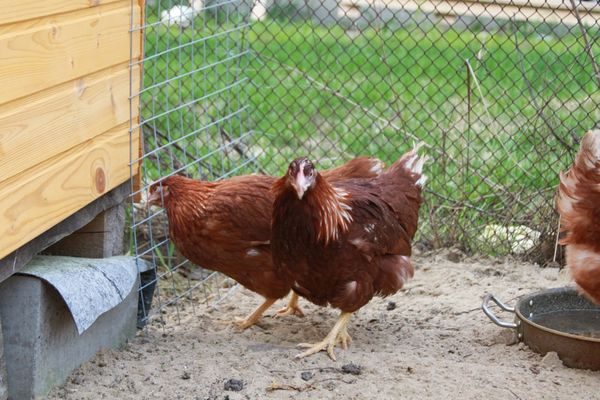 To save heat and reduce costs, it is recommended to warm the walls of the house. Drafts are also undesirable, so if they occur, it is necessary to close all the cracks and insulate the windows.The duration of daylight has a great influence on egg production.
To save heat and reduce costs, it is recommended to warm the walls of the house. Drafts are also undesirable, so if they occur, it is necessary to close all the cracks and insulate the windows.The duration of daylight has a great influence on egg production.
A house or a special barn in households should be equipped with artificial light lamps. At home in the summer, chickens get enough light, while being on a whole day out.
In winter, during the period of extreme cold and constant interruptions in the barn, artificial lighting is typical for a normal daylight hours. In industrial conditions or premises without access for walking, constant observance of daylight hours through artificial lighting is necessary.
The house is ventilated every day., in order to avoid various diseases.
Household Growing Tips
When the floor content of the broken brown, you need to properly equip the barn house. Straw or sawdust should be laid on the floor as a litter. The room is equipped with perches, nests, feeders and drinkers.
- Perches - These are special poles, with a diameter of approximately 40 mm, necessary for the rest of chickens.
- Nests When building a nest for broken Brown, the dimensions of the cross are taken into account, since the birds differ in their large parameters.Nests should be spacious so that the chickens can easily climb and unfold.
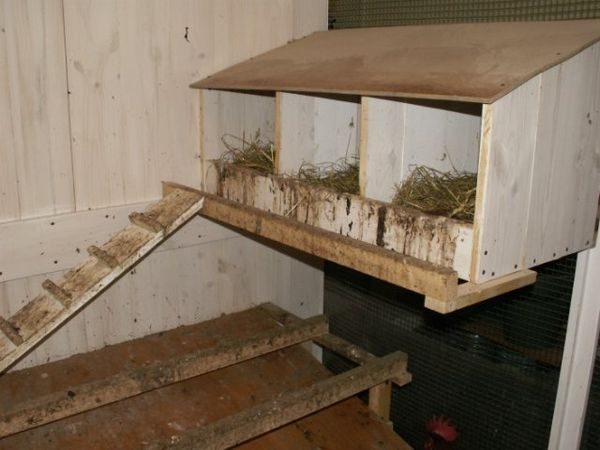
- Feeders elongated rectangular shape. On top of the feeders, you can tighten the net, the diameter of the holes of which should be so large that the chicken quietly stuck her head and got to the food and at the same time could not get into the feeder with her legs and scatter the grain.
- For access of chickens to water in poultry farms are used. special drinkers. In private farms, this may be a small capacity a little dug into the ground.
Characteristics: egg production, when they begin to rush
Loman Brown is a small agricultural bird. An adult rooster weighs about 3 kg, and a chicken weighs up to 2 kg. Loman Brown begin to sweep as early as 5.5 months. For the year from one chicken can be obtained 315-320 eggs, the weight of 1 egg - 63-64 g
To receive one egg consumes 124 g of feed. The shell is dense, brown in color. Sexual maturity occurs in 135 days, and the entire growth period is 161 days. The maximum number of eggs is observed at the age of 160-180 days. Chick output from 80 to 98%.
We offer to watch a video about this breed.In this video, you can find out how old chickens, tips on content and more are rushing.
Varieties and differences of chicken and rooster
There are many different types of this cross. These differences are caused by the use of 4 species of hens in selective breeding. Roosters are completely different from chickens in color.
As a result of the selection selection, 2 primary colors of the plumage of cocks were identified: golden brown, a slight impregnation of black and white plumage is permissible. Chickens are characterized by a reddish-brown color of plumage.
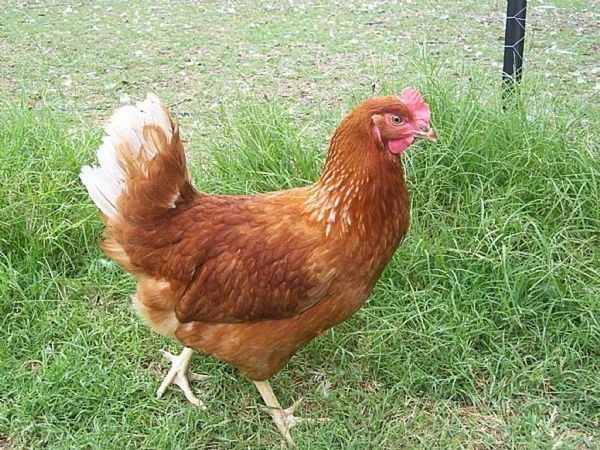 Such differences make it possible already at the age of one to divide chicks by sex, because white males and brown chickens.
Such differences make it possible already at the age of one to divide chicks by sex, because white males and brown chickens.
Cultivation and feeding
Properly balanced diet is an essential requirement for high egg production.
A balanced diet of adults and chicks for all nutrients, vitamins and mineral supplements ensures the normal development of the birds and high productivity.
Since chickens are egg type, there should be a sufficient amount of mineral supplements and protein in the feed.The diet should include chalk, bone meal and gravel, the presence of these components contributes to good egg production, high durability of the shell and keeps the body of the bird in a healthy state.
In chickens, contained in the cells, motor activity is limited, and as a result of overfeeding, this can lead to the deposition of fatty tissues.
It is recommended to feed the chicken 3 times a day.
The first feeding occurs in the morning, but not immediately after the chickens wake up. The second time the feed is distributed in the afternoon, and the third - in the evening. Feeders should be clean, free of contamination and fungal diseases. The bird requires constant access to water.
It is not recommended to feed whole grainsThe best feeds are specially made for compound laying hens.
Wheat germ should be given as a small dietary supplement. Such measures are required in connection with special digestion for the rapid digestion of feed.
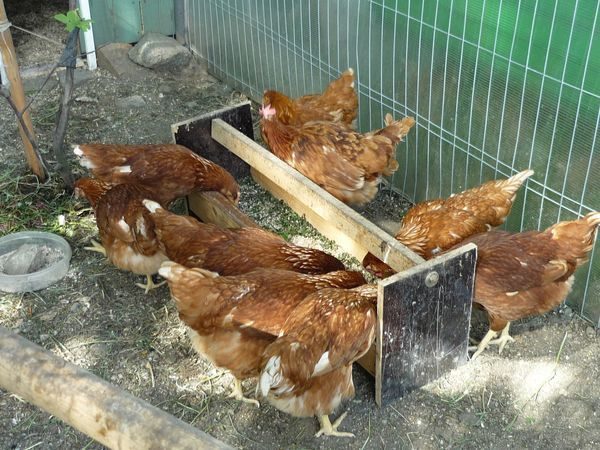 As natural vitamin supplements, chickens are fed roots of forage beetroot, carrots, turnips, it is allowed to give cabbage and pumpkin.Of cereals in the diet include wheat, corn, a little barley and millet.
As natural vitamin supplements, chickens are fed roots of forage beetroot, carrots, turnips, it is allowed to give cabbage and pumpkin.Of cereals in the diet include wheat, corn, a little barley and millet.
In summer, cross-broken brown needs green feed. If there is access to walking grass, then the problem with green fodder is solved by itself. When the cellular content is necessary to provide grass smoking.
How much and how to feed chickens: daily ration and supplements
In the first 2 weeks of life, chicks should be kept separately in quarantine. The basis of the diet in this period is a special starter feed. Then some grain is introduced into the feed, and the starter feed is gradually replaced with the usual one.
Cornmeal, root crops and green fodder are integral components. For normal and full development of the diets of chicks should be balanced in all micro and macroelements, as well as vitamins.
Up to 2 weeks of age, selenium should be added to drinking water.
Egg Incubation
Cross-broken brown is not divorced in a natural way. Good offspring can only be obtained through artificial incubation.It is recommended to buy young or eggs from the poultry farm for incubation activities.
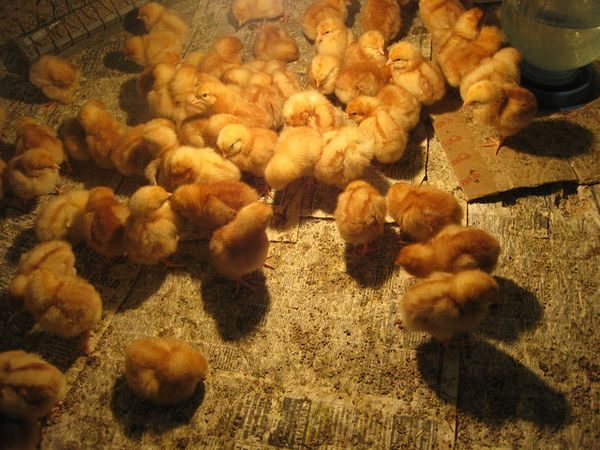 If you follow all the rules, you can get viable, strong offspring, which will later become a highly productive bird.
If you follow all the rules, you can get viable, strong offspring, which will later become a highly productive bird.
Description of Diseases
Cross-broken Brown is distinguished by its vitality and high adaptive abilities, but despite this, the bird is still subject to a number of diseases.
- One of the most frequent diseases is Coccidiosisit is spread by wild birds and rodents. With the smoking of coccidiosis in chickens, the birds become lethargic, lose their appetite, walk with their wings down to the ground and are constantly looking for sunny places. Treatment is preferably carried out under the supervision of a veterinarian. To combat the disease, antibiotics are attributed in combination with the drugs Kokkidivit, Avatek and Sakoks.
- Ascoridosis - This is another disease of poultry when infected with nematodes. Ascoridosis is most susceptible to young and chickens. Symptoms: growth retardation, poor appetite and lethargy. Sick adults almost cease to be carried. Piperazine is used to treat ascorrhidosis.Adults for 1 liter of water give 0.5 g of piperazine, and young animals 0.2 g.
- Tuberculosis - This is one of the most dangerous diseases transmitted from birds to humans and back. The source of infection is the droppings of infected birds. Tuberculosis is difficult to detect at an early stage. Symptoms: The mucous membrane of the mouth of the chickens is covered with nodules, the skin is damaged and the joints swell up. When TB is detected, the bird is killed and the corpses are burned. Meat is strictly forbidden to eat.
Breed advantages
- Precocity. Sexual maturity comes in 135 days.
- High yield of offspring up to 98%.
- First egg in 5.5 months.
- Maximum egg-laying in 160-180 days.
- Good acclimatization and unpretentiousness
- The possibility of content in any conditions: cells or outdoor with and without hills.
- Minimum cost to feed.
- High level profitability.
Minuses
- Short intensity egg-laying. After 80 weeks, the number of eggs begins to decline and the content of chickens becomes unprofitable, so the bird has to cut and update the livestock.
- Loman brown do not reproduce naturally, chicks can only be obtained by laying eggs bought on special poultry houses in the incubator.
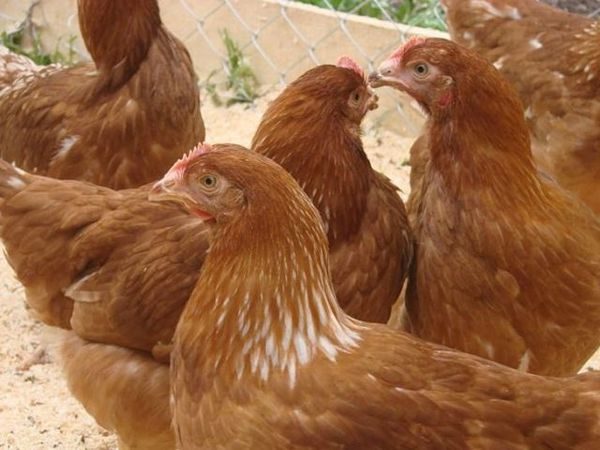 Chicken broken Brown is one of the best egg-type crosses. It is unpretentious in keeping and feeding, rarely get sick and is characterized by high egg-laying rates.
Chicken broken Brown is one of the best egg-type crosses. It is unpretentious in keeping and feeding, rarely get sick and is characterized by high egg-laying rates.
Breeding broken brown does not require large expenditures and efforts. A warm house with light, a balanced diet and compliance with the simplest rules of keeping and breeding will create a healthy and highly productive herd.
Reviews
Loman Brown is a wonderful laying hens. Rush practical all year round. Brown eggs, large. Begin to be born early. Calm The food is completely picky, enough special feed and utility feed, which is at home.
Carcasses, as for egg chickens, are quite large. After 2 years of laying hens, it is desirable to cut, because the number of eggs decreases. Overall a beautiful breed.
This cross received many forest reviews not only from professional poultry farmers, but also from ordinary farmers. According to their descriptions, the bird is well adapted for keeping at home.
You can buy ready-made youngsters or eggs for laying in the incubator. The hatchability is high, the chicks are strong and viable.
With proper feeding and proper care for the year from 1 chicken you can get 320 eggs. Eat not very much. Content requires minimal financial and physical costs.
Video review on layers of this breed
An interesting video from the owner of chickens breed Broman Brown. The author talks about the pros and cons, egg production and much more ... We recommend to look.
